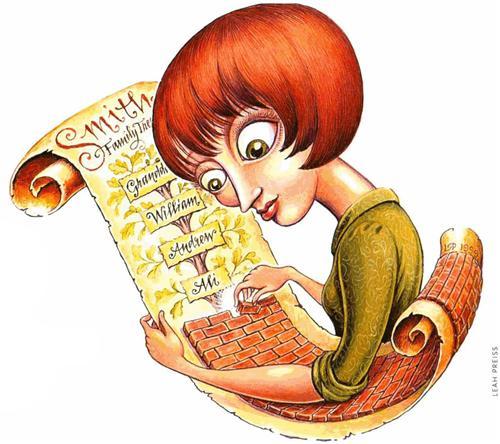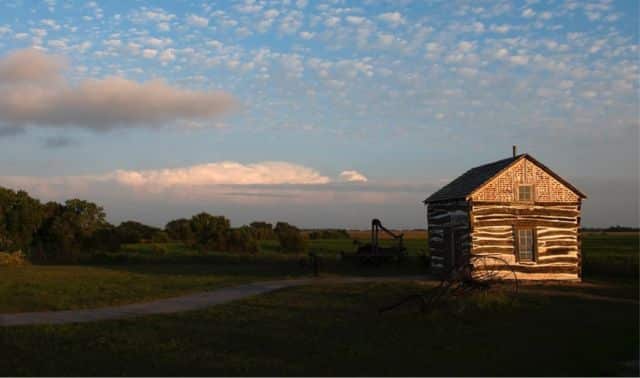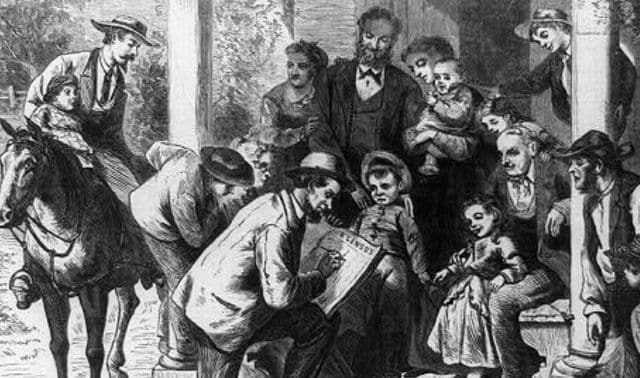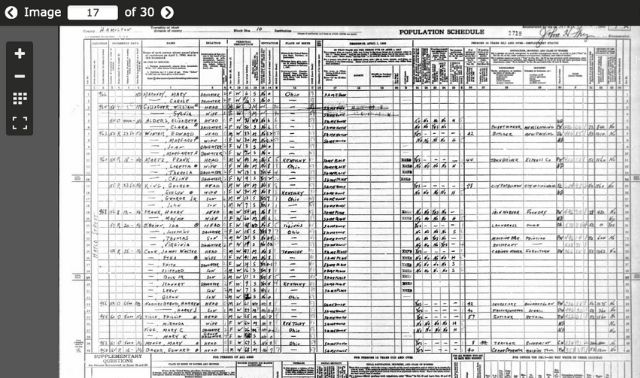
When you hit a brick wall in your search for answers about your ancestors, your Smartest Strategy is to focus.
In genealogy, as in the rest of your toils, you need to clarify where you’re headed in order to know when you get there.
Forgive my parents? Never! And why, you might ask, would anyone feel that way? Smith, that’s why. It’s terribly unfair for a genealogist to have been born a Smith, having to wrestle an all-too-common surname from generation to generation.
The only way I’ve coped with the continuous parade to the past of Smith after Smith, each with fewer records than the last, has been to remember this mantra: Pick an ancestor — any ancestor.
If you’re like me, the sheer number of ancestral opportunities is exactly what stops you in your tracks. It’s just not possible to search every line at the same time. The only way to solve these brick-wall problems is to pick one problem on which to concentrate, then tackle that problem with a vengeance. Don’t worry — when you get back to your other ancestors, they’ll still be dead.
How do you force yourself to focus? Try the magic of writing. It almost doesn’t matter how you do it. Scribble in pencil on a legal pad, make up a checklist of ancestral attributes, or compose an e-mail. Just sketch your dilemma in words so that you, too, can be on the outside looking in instead of stuck in the muck deep inside.
To show you what I mean, let me spin the tale of Little Orphan Ali. Of course, he was a Smith.
Make sense of censuses
My entanglement with genealogy was no more than several weeks old, although I’d come quite a distance in that time. I’d progressed from my granddad to his father, a man I never knew. Because of family pictures and recollections I easily named and located greatgrandfather William Eli Smith as a youngster on the 1880 census of Hubbell, Neb., clearly marked as a son to farmer Andy Smith, who in turn was noted as “b. Missouri.”
So it was on to the 1870 Missouri census for a great-great grandfather named Andy or Andrew Smith, or any Mr. Smith sporting the initial A in his name. From the Nebraska census I knew he should be close to 30 years old and there may or may not be a younger brother Isaac in residence, plus a mother oddly named “Sarah Murry” Mama Sarah could be a widow, or not, 10 years earlier, depending on the health and well-being of some mysterious Mr. Murray (or “Murry”). With any luck, Andy’s wife, not in evidence in 1880, would be present in 1870.
After wading through most of the Smiths of 1870 Missouri, I finally found the family lurking in the wilds of Atchison County in the northwest corner of the state:
Smith, Andy, 29 b. Missouri Farmer S2000 real estate/$500 personal property
Delilah, 28, Keeps House John, 9, In school Wm. E., 4 Calida A., 10/12
Quickly I snatched the marriage record of this couple in Atchison County, showing that they were wed in the nick of time to appear as a sedate married couple on the 1860 census. Yes, there they were, easily found. I was now ready to tackle locating his parents, for he was too young at the time of the 1850 census to be head of household and appear on a census index.
That quest began with Andrew’s death certificate, supplied by the Nebraska Bureau of Vital Statistics: My Andrew Smith was born January 16, 1840, to Ali Smith and Sarah Collett. Yippee! I had a name to search in 1850. I did, and there they were in Cole County, in the middle of the state:
Smith, Ali, 34 b. Tennessee
Sarah, 26
Andrew, 9 b. Missouri
Margaret, 7
James, 4
Isaac, 2
Phebe, 1
Sure enough, I also spied Ali and Sarah in Cole County on the 1840 enumeration, just pre-An-drew. I nabbed their marriage record. Sarah’s parents were easy to find — they lived next door. Poor Ali, however, had sung his swan song, for the next record on which I found him is a probate package. But it contained only the names of Ali’s widow and children, plus an infant son William not yet born at the time of the census. Ali’s administrator and appraisers were county officials — none a “Smith.” (Did Ali not know the rules by which genealogists practice? Shouldn’t there be a grief-stricken parent or sibling on one of these pieces of paper?)
Frantically I searched the remnants of Ali’s life — his probate package, his deeds, his census. The clues were few and pointed to his having been born either in Tennessee or Kentucky depending on which census year I decide to believe. Since none of the rest of his family seemed to know how old they should be from census to census, I loosely estimated his year of birth between 1810 and 1820.
Now I could toss out the Smith families with German births, those from Virginia or Ohio, and those who don’t appear to have been in baby production in the decade that should hold his birth. There was a candidate for his papa, an older Ali Smith in the same Missouri community. Then, alas, I found his probate package, which clearly omits my Ali.
I searched every other Smith family at whom my Ali could have thrown a rock, but each seems to be a blind alley. That older Ali still looked most feasible, so I tracked each of the children named in the probate package, confirming through the estate records of an unmarried child that my fellow was left out again.
Where’s William?
I needed a new plan. The signs and portents for a family relationship between the two Ali Smiths were all there. These two men shared not only a surname but an odd first name, best friends and associates, origins in Tennessee, socioeconomic status and religion. Despite their appropriate ages, they didn’t appear to be father and son. What could their relationship be?
The only way to know was to further pursue this retreating train. So I trekked to Campbell County, Tenn., where I found a third Ali Smith, the oldest of them all. His records showed that he left 10 children, including the middle Ali whom I first suspected to be the father of mine.
By now I’d accepted the inevitability of Smith research and begun to examine all 10 of the descendants of this new, oldest Ali. I documented each child and their children, hoping to find a scrap mentioning my Little Orphan Ali. Alas, I spent several years determining that eight of the 10 children did not spawn my ancestor. That left daughter Elizabeth, who married Jacob Sharp, whose children I’d yet to prove. Although she’d be a bit young, she could have had him as an illegitimate child. But far more likely was son William Smith, whose 1830 census listing indicated two unnamed boys of the correct age range. Like a cat after a mouse, I closed in on this William Smith.
Sonuvagun, though, he outma-neuvered me. In 1848 a deed specified that this William left Campbell County for neighboring Morgan County. In 1852 a court case splitting family property noted the existence of this William, so he was still alive. Theoretically, he should be easily found on the 1850 census, possibly in Morgan County, Tenn.
But theory only sometimes becomes fact. The fact is that William decamped — he went I know not where.
How did I now feel about my parents, the Smiths? As though they singled me out for trial, for my next target must be the William Smiths of America on the 1850 census … or Bill, or any name with the initial “W” or “B.”
It’s been years since I began this quest, and I’m still stuck with Little Orphan Ali, the ancestor first discovered a few weeks into the excitement of genealogy. But I am closer to leaping the brick wall that surrounds my orphan because I have a strategy. When faced with the multitude of William Smiths, it takes a plan.
Picking your targets
Have you ever noticed that it’s hard to know when you’ve found an answer if you don’t know what the question was in the first place? In genealogy as in the rest of your toils, you need to clarify where you’re headed in order to know when you get there. You’ve picked an ancestor as I picked the elusive Ali Smith. Tear into him or her. Just what do you want to know — what is your question?
To state that you want to learn more about someone is insufficient planning; the field of research possibilities is far too wide. You will never have enough research time to examine all records made during the time of your brick-wall problem, nor will you be able to search all possible record substitutes or records left by others who might have known your ancestor — not to mention records made long after the event that recall it. Be objective and specific so you’ll be able to intelligently select the records and resources to consult.
The line of march you follow in studying an ancestor is dictated by the specific goal that begs meeting. True, some sources provide multiple bits of data and will be consulted for many reasons, but be very clear with yourself about what you want to discover.
I can read Andrew Smith’s death certificate a dozen times if I wish. It’s always going to tell me that he was born January 16,1840, and died December 16,1929, the names of his parents, the name of at least one wife, and other invaluable insights. It will never answer all my burning genealogical questions. Was he a Johnny Reb or a Billy Yank? Where did he live, and where will I find further records on him? Did he have a wife other than the one listed? Did he feel strongly about his religion? For these items I must consult other records.
In the same way that you’ve focused on one ancestor to search, now go further and specify what you want to know about this person. At a minimum you should try to accumulate these:
• Ancestor’s name and source that tipped you to study him
• Name of his or her spouse and record on which you found it
• Name of father and source
• Name of mother and source
• Birth information and source
• Marriage data and source
• Death and/or burial information and source
There are many other questions you may want answered, but these are the basics. Any one of these that is missing in your fund of knowledge about an ancestor may stop you from going further. If you can’t provide a response to any of the categories above, that should be your goal.
Boil down your thoughts on your brick-wall progenitor and come up with a single question to search. Say it in a simple sentence. If there’s an empty spot on my problem statement form where information about the marriage of Andrew Smith should go, then my question centers there: What proves Andrew’s marriage?




